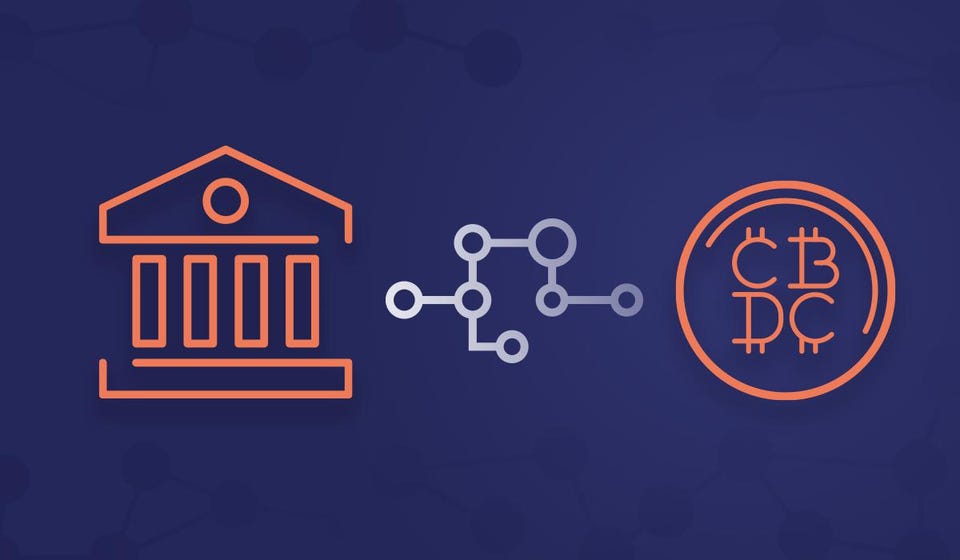In this part of a 2-part series, we take a look at the potential of CBDCs in guiding African countries toward financial inclusion and efficient delivery of public services.
Digital currencies have surged in popularity over the last few years as cryptocurrencies and stablecoins have become more popular. Especially with the substantial market growth of crypto in Africa—up to 1,200% since 2020—opportunities to merge this new technology with existing infrastructures to further increase financial inclusion will continue to open up on the continent.
As decentralized finance and other fintech companies keep transforming the way the world interacts and transacts, apex financial institutions are also considering or beginning to introduce monetary policies that support digital financial assets. One of those are digital currencies.

What are Central Bank Digital Currencies?
A CBDC is essentially digital money. Like traditional fiat currencies, it provides holders with a direct claim on the central bank and allows businesses and individuals to make electronic payments and transfers.
In the past 2 years, the number and progress of central banks’ digital currency explorations worldwide have increased. A recent Bank of International Settlements (BIS) survey found that 90% of central banks are now exploring implementing central bank digital currencies (CBDCs). Referencing CBDCs such as the Bahamas’ Sand Dollar and Nigeria’s eNaira that are already live, it’s expected that many central banks will follow the lead of the 10 countries that have fully launched a digital currency.
The idea of CBDCs comes from cryptocurrencies like Bitcoin, however, there are differences. Cryptocurrencies are unregulated and decentralized. They are volatile as their value is based on investor, usage and general public interest. This volatility can be seen in the swings in the value of Bitcoin over the last 12 months. CBDCs’ value is pegged to a country’s currency and is designed to be more stable and secure as they are not built to become a source of financial disruption in an economy.
In a recent survey of over 1,600 financial leaders across the globe, it was discovered that over 30% of these leaders consider both “financial inclusion” and “greater access to credit” as the most important potential breakthroughs for CBDCs. This shared belief is backed up by real-life CBDC use cases. To better understand why CBDCs are gaining traction as a way to revolutionize the current monetary system, we look at some of its practical applications across industries.

Key Use Cases & Applications
The primary benefits of a decentralized blockchain working in conjunction with a centralized authority that leads creation, distribution, and regulation of a digital currency include:
Cost-Effective Cross-Border Transactions
Many countries around the world are making strides towards improving what have historically been inefficient and expensive cross-border payments. One example is Nigeria and its banking regulator, the Central Bank of Nigeria. With the significant contribution of international remittance inflows (e.g. funds sent home by migrant workers) to the nation’s forex supply and its economy, the country is now turning to a CBDC solution to lower the cost and time involved in making these payments. Nigeria is taking a digital-first approach to solving these challenges and others as part of its financial inclusion journey. The CBN also believes the eNaira being accepted as a cheaper and faster form of payment by all merchants and business outlets will encourage more adoption, provide more insight and help the government formulate better macroeconomic policies that will integrate people outside the formal banking sector.
Access To Loans
In addition to faster and more affordable payments, the digital nature of CBDCs can make loans and other financial services more accessible to underserved communities. In many parts of the world – particularly those that are still heavily cash-reliant and without real-time payment systems – something as simple as lending money to a friend or family member could be made much faster and more efficient with the use of a digital currency sent and received via a digital wallet.
This ability to easily secure and repay loans could subsequently lead to more people establishing and building a credit history. A government-backed digital currency could also facilitate easier distribution of funds for social welfare programs, as seen with stimulus efforts in the recent pandemic.

The Possibility of Financial Inclusion With CBDCs
Clearly, CBDCs have a lot of benefits that can help accelerate economic growth as both businesses and consumers engage in a more efficient and affordable payment system. However, implementing CBDCs correctly is no small feat. To realize its full benefits, authorities must carefully tailor CBDCs to the needs of their end-users—their citizens—especially those who are currently excluded from the financial system.
A well-designed CBDC must be uniquely positioned to address barriers to inclusion, including offering the unbanked alternative pathways to open transactional accounts and participation in the digital economy, particularly those who might otherwise fail to meet banking requirements. Central banks can do this directly using e-wallets or other account structures, or through partnerships with existing institutions.
They can overcome prohibitive requirements by implementing tiered permissions structures, like the e-naira in Nigeria, which simplifies access for those without IDs, formal addresses, and even phones that are not internet-enabled. Again, CBDCs can help lower transaction costs for cross-border transactions and remittances and increase transaction speeds from days to seconds. For households and local economies reliant on remittance inflows, this helps strengthen economic livelihoods and resilience.
CBDCs can also help deliver public goods and improve government service delivery, including, for instance, payments such as social welfare disbursements, loans and subsidy programs for smallholder farmers or small-medium-sized enterprises (a World Bank survey shows that nearly 35% of adults in low-income countries opened their first financial account to receive government payments).
Traditional fiat currency systems create a multitude of bottlenecks that can cause transaction slowdowns, affecting the health of an economy. These include delays due to transaction communications between financial institutions that may lead to reconciliation errors in the payment flows. Expanding access to digital financial services, which increases access to credit and social welfare packages, can consequently help to drive down poverty and increase economic growth.
Digital currencies backed by central banks can eliminate the systemic costs for individuals and businesses while enabling faster payments and redeploying capital at shorter turnaround times via digitized transactions and currency interactions.
CONCLUSION
While there remains much work to be done, consensus on the potential for CBDCs to bring about more inclusive financial systems is clear. Government investments in innovative public payments infrastructure can help increase financial inclusion by lowering financial access barriers and forging new pathways of upward mobility. With the right design, CBDCs could help bring about more equitable and inclusive government service delivery.
In the next part of this series, we’ll look at more upsides, drawbacks and limitations standing in the way of broad CBDC rollout and adoption.

